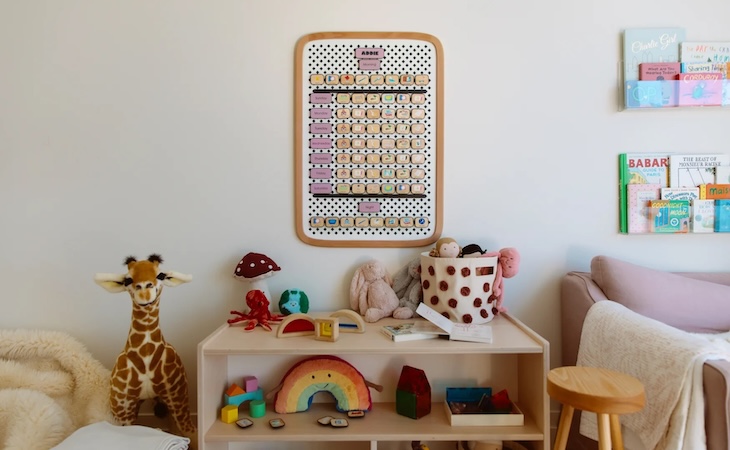Just as you think you have your baby on a regular sleep schedule, all of a sudden your little one has trouble sleeping again. Hello, sleep regression. At various ages, many babies’ sleep patterns suddenly shift.
This is normal. Even better, your baby will sleep well again. It just may take a few days or, unfortunately, a few weeks. Be patient and read on to learn what sleep regression is and how to help your baby (and you!) get the Z’s they need.
What is sleep regression?
A sleep regression isn’t just one bad night. Like adults, babies have a rocky evening here and there. Instead, baby sleep regression is when your baby goes from a pattern of sleeping well to suddenly not sleeping as they normally do for anywhere from about one to four weeks.
What are the signs of sleep regression?
Every baby is unique, so what sleep regression looks like with yours could differ from how your friend’s baby acted. Signs of sleep regression include:
- Your baby wakes up more often than usual.
- Your baby wakes up and struggles to fall back to sleep.
- Your baby cries and fusses when you put them down for a typical nap.
- Your baby naps less often or takes shorter naps.
When does sleep regression happen?
“Parents typically see sleep regression around the time a baby is trying to master their milestones,” explains Violet Giannone, RN, founder and director of the Institute of Pediatric Sleep and Parenting. “During those times, there’s a lot going on physically and cognitively, and it’s really hard for them to sleep.”
Additionally, around four months of age, a “baby’s sleep cycle changes from two cycles to more like an adult’s, which is four cycles,” says Dana Obleman, creator of the Sleep Sense™ program. “For a lot of babies, this isn’t a smooth transition. It can cause some fragmentation of the night.”
While this is often thought of as the four-month sleep regression, that’s not an exact date, nor is it the only regression. (Sorry, parents!) Every regression tends to occur during a specific period. The most common sleep regression ages are:
- 3-5 months: when baby learns to roll over
- 6 months: when baby is going through a growth spurt
- 8-10 months: when baby learns to crawl
- 12 months: when baby learns to walk
- 18-24 months: toddlers can go through a sleep regression, often in an attempt to proclaim their independence (“You can’t make me sleep, Mom!”)
If you watch on a video baby monitor, you may see your little one wake up and practice their current milestone over and over, Giannone says. Eventually, they may become frustrated and cry out.
Related: Sleep tips from the “baby sleep boss”
How do you manage sleep regression?
To help your baby with sleep regression at any age, try these tips:
Give baby lots of practice time when they’re awake
Make sure they have a comfortable surface to try to roll over or crawl or things to help them attempt walking. And whatever they’re trying to learn, make sure they practice outside of the crib. You want the crib to only signal “sleep” to them. “Even if they get frustrated and start whining, let them practice [during wake times] so they’re less likely to do it at sleep time,” Giannone says.
Don’t intervene immediately
If your baby wakes up and starts practicing but they haven’t mastered the skill, they might end up stuck in an uncomfortable position where they can sit up but can’t lie back down. Go in and help them back into a comfortable position, but keep it low-key, Obleman says. This isn’t the time for peek-a-boo. Just help them back down and leave the room. (Here’s how to sleep train a baby.)
Have good sleep hygiene
Even babies need dark rooms, perhaps a noise machine, and—most importantly—a consistent bedtime routine. (Here’s what you need to know about RSV and sleep for babies.)
Put baby in the crib when they’re drowsy
Don’t wait until they’re overtired and may fight sleep. Signs such as yawning, fussing, and rubbing their eyes are often cues it’s time to wind down and get into the crib. (Learn whether weighted sleep sacks are safe for babies.)
Don’t go into panic mode
“Parents often wonder, ‘Why is this happening?’ and then they try feeding the baby or taking the baby to bed with them,” Obleman says. “All of these are radical differences to the baby’s night.” If you do this, then three weeks later, your baby may still want to be fed several times a night (when you just cut down on night feedings) or be sleeping with you.
Consider how baby falls asleep
If you’re always going in and assisting them, this is more about sleep skills than sleep regression, Obleman says. In that case, consider a program to help give baby independent sleep skills.
Next, follow this expert-approved advice on how to design a baby nursery that’s stylish and functional.





